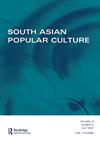Fusion music and fault lines in Shoaib Mansoor’s Khuda Kay Liye
IF 0.3
0 ASIAN STUDIES
引用次数: 0
Abstract
ABSTRACT This paper argues that while fusion music in Shoaib Mansoor’s film Khuda Kay Liye (KKL) (2007) serves to reclaim Pakistan’s South Asian heritage, there are moments in KKL when non-Muslim South Asians are othered. I examine these contradictory elements in the film with respect to two songs. I first look at ‘Bulleh Nu’, an anti-casteist ‘kafi’ attributed to the seventeenth/eighteenth century Sufi poet Baba Bulleh Shah, born in present-day Pakistani Punjab. I then contrast ‘Bulleh Nu’ with the film’s problematic representation of the Sikh as a ‘villainous’ other. Subsequently I analyze ‘Neer Bharan’, a ‘bandis ki thumri’ associated with the cosmopolitan ethos of the nineteenth century kingdom of Awadh, now located in the Indian state of Uttar Pradesh. Alongside my analysis of ‘Neer Bharan’, I write about how KKL only partially distances itself from the conflation of religious and national identities in Pakistan. The minoritization of non-Muslims from the subcontinent in the film is consistent with how they are represented in certain Pakistani educational and cultural texts. Therefore the desire to embrace Pakistan’s pluralistic traditions in Khuda Kay Liye is juxtaposed with a relatively uncritical stance towards non-inclusive notions of citizenship.Shoaib Mansoor的《Khuda Kay Liye》中的融合音乐和断层线
摘要本文认为,在肖伊布·曼苏尔(Shoaib Mansoor)的电影《胡达·凯·利耶》(Khuda Kay Liye,KKL)(2007)中,融合音乐有助于恢复巴基斯坦的南亚传统,但在KKL中,也有非穆斯林南亚人被排斥的时刻。我通过两首歌来审视电影中这些矛盾的元素。我首先看的是“Bulleh Nu”,一个反种姓的“kafi”,被认为是十七/十八世纪苏菲派诗人Baba Bulleh Shah的作品,他出生在今天的巴基斯坦旁遮普省。然后,我将《Bulleh Nu》与电影中有问题地将锡克教描绘成“邪恶”的另一半进行了对比。随后,我分析了“Neer Bharan”,这是一个与19世纪Awadh王国(现位于印度北方邦)的世界主义精神有关的“bandis ki thumri”。除了我对《尼尔·巴兰》的分析,我还写了KKL如何与巴基斯坦的宗教和民族身份混为一谈保持部分距离。电影中来自次大陆的非穆斯林的少数化与他们在某些巴基斯坦教育和文化文本中的表现是一致的。因此,在Khuda Kay Liye接受巴基斯坦多元传统的愿望与对非包容性公民概念的相对不加批判的立场并列。
本文章由计算机程序翻译,如有差异,请以英文原文为准。
求助全文
约1分钟内获得全文
求助全文
来源期刊

South Asian Popular Culture
Arts and Humanities-Visual Arts and Performing Arts
CiteScore
1.00
自引率
0.00%
发文量
29
 求助内容:
求助内容: 应助结果提醒方式:
应助结果提醒方式:


